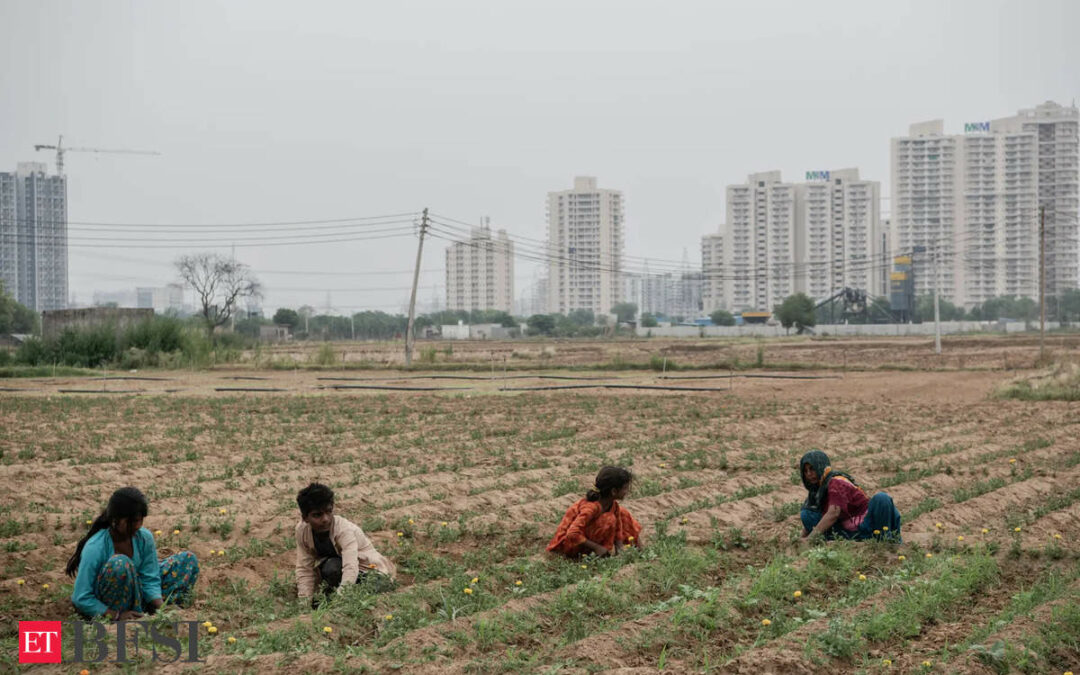The Reserve Bank of India’s (RBI) recent analysis of employment data for the pandemic year 2020-21 has revealed significant increases in employment within agriculture and allied activities, construction, health, and social welfare. This report, which measures productivity across 27 sectors, has sparked debate due to the unexpected rise in employment during a year marked by severe economic downturns, resulting from COVID-19.
According to RBI’s report released last week, there was an 18.5 million increase in employment in agriculture and allied services, while the construction sector saw a 4.8 million rise. These figures align with the real gross value added (GVA) in agriculture, which grew by 4%, against an overall GVA contraction of 4.1%.
On Saturday, Prime Minister Narendra Modi referred to the report, stating, “80 million new jobs were created during the last three-four years,” adding that this should silence those perpetuating false narratives about the lack of job creation.
The KLEMS database, used by RBI and compiled from multiple data sources, indicates much of the employment growth in the farm sector can be attributed to self-employment, as many people returned to their villages following the nationwide lockdown in late March 2020.
Employment in the health and social work sectors rose by 1.3 million during the pandemic year due to increased demand for health services. Contact-intensive manufacturing saw job growth of about 1 million. However, the education sector experienced the steepest decline, with a reduction of 1.2 million jobs.
In the subsequent year, 2021-22, the manufacturing sector’s employment grew by 4.1 million, likely bolstered by the recovery of economic activity. Sectors such as textiles, leather and footwear, basic metals, and fabricated metal products saw employment gains. Meanwhile, contact-intensive sectors like hotels and restaurants added 0.6 million jobs, and business services saw an increase of 2.2 million.
RBI officials emphasize that the KLEMS data follows globally accepted principles for estimating input, output, and productivity, making it a consistent and reliable information source.
An analysis of data released by RBI on Tuesday shows that 3.1 crore workers were added in 2020-21, 1.2 crore in 2021-22, and following the recovery, 1.9 crore in 2022-23. Before the onset of COVID-19, 4.2 crore workers were added in 2019-20.
Pronab Sen, the former chief statistician of India, commented, “The increase is mainly in agriculture and agriculture has too many people, and it has increased further. It goes against the 30-year trend of declining employment in agriculture and this could be the reason for the spike during Covid years.”
He further explained, “It was largely led by women and also those who had gone back to their villages to work in farms, adding that the increase has been largely in agriculture and casual labour, which should not be read as addition to jobs.”
Numerous data points and research indicate significant job losses in the immediate aftermath of the pandemic. The sharp economic impact of the pandemic included a contraction of 23.1% in the first quarter of 2020-21 and 5.8% in the second quarter. Overall growth for FY21 contracted by 5.8%, but the economy has since shown signs of robust recovery.
According to RBI’s report, India created nearly 4.7 crore jobs in FY24, a figure higher than several other estimates. The employment growth rate for 2023-24 is estimated at 6%, compared to 3.2% in 2022-23. The report assesses both industry productivity and employment.
This is the first time RBI has attempted to extrapolate a provisional estimate of productivity for FY24 using available data, leading to a vigorous debate over the state of jobs in the country.
(With ToI inputs)











